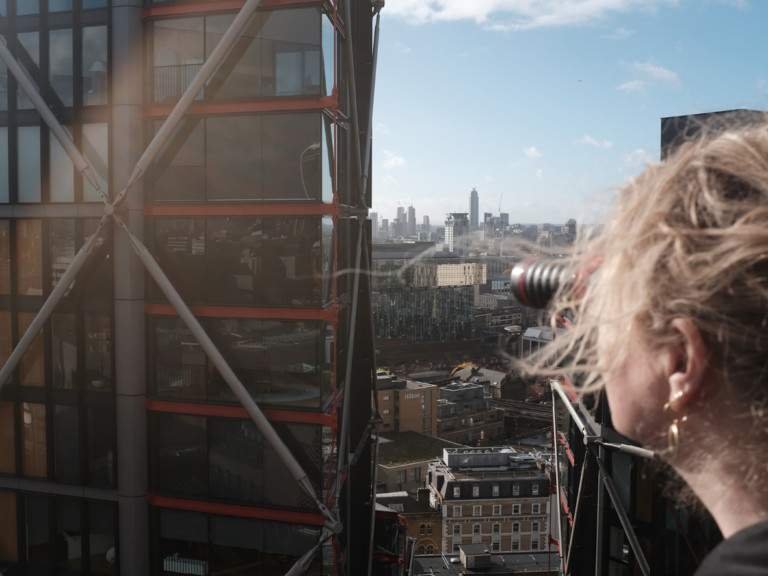There is a peculiar legal battle that has been going on for three years involving one of the world’s most famous museums-London’s Tate Modern. The bone of contention is the museum’s rooftop terrace, designed by the renowned firm Herzog & de Meuron, which opened in 2016 and immediately became one of the London institution’s main attractions, thanks to the view it offers of the city. But that’s not all: the fact is that the 10th-floor terrace has created quite a few headaches for neighbors, who complain that visitors to the Tate are too intrusive to their privacy. Despite signs urging visitors to respect the privacy of the tenants of the building across the street, there are not a few who, armed with binoculars, try to peek through the windows and balconies of those across the street who live in the luxurious Neo Bankside apartments (over three million pounds for a three-bedroom apartment) the large windows do in fact allow them to see everything that goes on inside. There have also been instances of visitors taking pictures of the houses and posting them on Instagram. Thus, five residents, in April 2017, decided to sue the Tate: “our houses have become like zoos,” they complained. Tate director Nicholas Serota’s suggestion had not been acted upon (“put up curtains,” he had said), and he had also explained that those who had bought the apartments knew that the Tate would open the terrace.
The first round of the legal battle had seen a victory for the Tate: the judge had in fact ruled in favor of the Tate, effectively reiterating what the director had said, namely that the purchasers had knowingly bought apartments with exposed glass windows, and that they should have installed curtains or placed plants (there would be no invasion of privacy if the residents took such steps, the judge had ruled). And again, playing against the apartment dwellers is the fact that, originally, the glazed spaces were envisioned as “conservatories” or “interior balconies,” and that the idea of using the area as a living or dining room had been the tenants’ choice. “If they had not done so, there would have been nothing interesting to see,” according to the judge.
But the residents evidently do not want to put up curtains or redesign their homes, and so the battle has gone on, including curious incidents (some residents complain about obscene gestures being directed at them by some visitors), a work inspired by the affair (the Please respect our neighbors’ privacy series by photographer Max Siedentopf, who even made binoculars available to visitors: it is clear that his sympathies are not with the residents), and the stubbornness of the Tate, which has never thought of closing the terrace as “an important part of the public offering,” and therefore will continue to be open to visitors (and, consequently, voyeurs).
The new chapter in the affair has been written in these hours: the residents have in fact decided to appeal, believing that the first-instance ruling was incorrect, and the battle will probably be pursued with the same arguments (the neighbors will attack on the basis that Tate visitors invade their privacy, while the museum’s line of defense will focus on the fact that the residents were and are aware of what their purchase potentially entails, that they knew the museum would open a viewing terrace, that a simple mechanical operation such as installing a curtain would solve the problem, and on the fact that if the residents had stuck to the original plans the problem would not have arisen). It is still unknown when the court will decide on the case: in the meantime, however, it is being discussed, the case has gained national prominence in England (all major newspapers are covering it), and public opinion is divided.
Pictured: Max Siedentopf, Please respect our neighbors’ privacy (2018), photographs showing visitors to the Tate observing their neighbors.
 |
| Neighbors of London's Tate want to shut down viewing terrace: 'visitors look in on us' |
Warning: the translation into English of the original Italian article was created using automatic tools. We undertake to review all articles, but we do not guarantee the total absence of inaccuracies in the translation due to the program. You can find the original by clicking on the ITA button. If you find any mistake,please contact us.